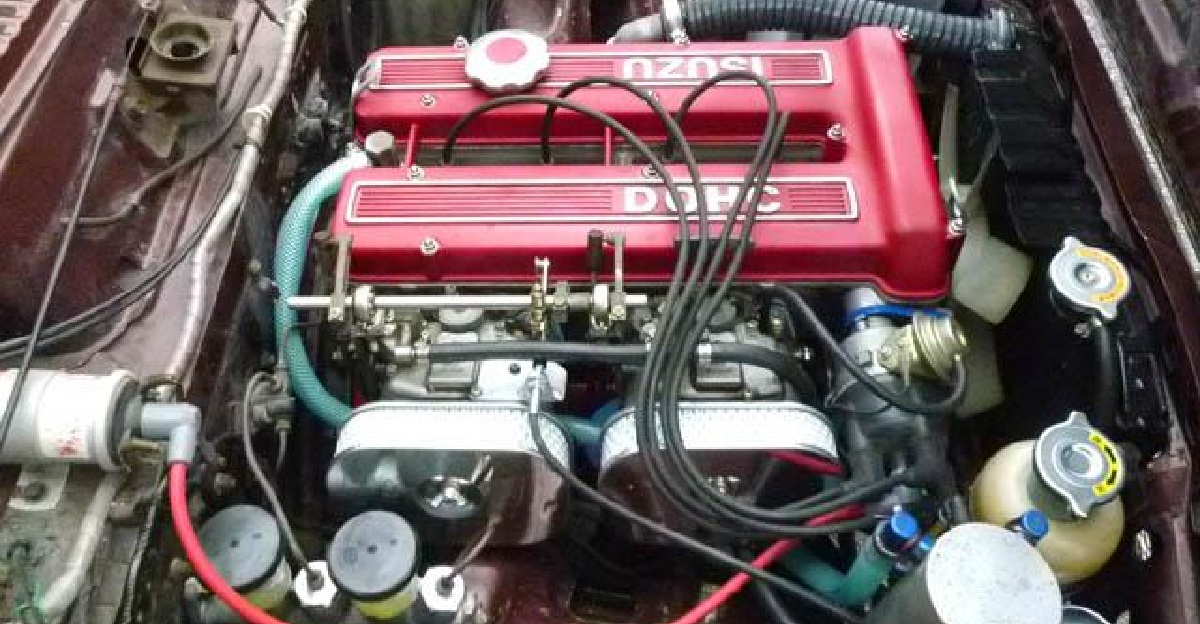Newbie question- why 8v twin cam
Moderators: elky, rodeobob, Spaminator
Newbie question- why 8v twin cam
Hi, I have recently bought a '83 Gemini panelvan and am looking at what engine I want to put in. Due to apparent ease of fitting, G200W is one of the front runners, but I am intrigued as to why Isuzu designed an 8v twin cam, it wouldn't have any greater degree of valve control than a SOHC would it. Sorry if this is a stupid newbie question.
In reply to my own question I did some searching on other forums and according to ImpulseRocket89 at http://www.isuzone.org/forums/showthread.php?t=1985
The advantages of an 8V Twin cam over SOHC are:
"Top spark plug placement and independant control of each intake and exhaust cycle."
Glad I could be of help....to myself....hopefully someone else will be interested too
The advantages of an 8V Twin cam over SOHC are:
"Top spark plug placement and independant control of each intake and exhaust cycle."
Glad I could be of help....to myself....hopefully someone else will be interested too
-
archangel62
- Long Term Member

- Posts: 338
- Joined: 11 Dec 2005, 03:32
- Location: Adelaide, Australia
- Contact:
- denny117
- Probationary Member

- Posts: 6
- Joined: 12 Dec 2007, 13:30
- I live in: Act
- Location: Canberra
- Contact:
The original G161W engine was designed in 1965-66. The engine was intended for Formula 3000 racing in Japan. Once the preliminary design was accomplished, the Isuzu engineers set about fitting it to the R1. The engine was de-tuned and further developed over time for road use and became available in the 117 Coupe, Bellett, Gemini and Piazza as a premium product for it's time.
The reason they developed 8 valve DOHC engines at the time was because of the technology they could mass produce at the time. In modern race engines, a 16valve engine will usually make 20 bhp over it's 8valve counterpart at peak power. Unfortunately this isn't the case with hemispherical combustion chambers. It wasn't until Honda had successfully pioneered the pent roof combustion chamber in the late 60's that making 16valve heads for cars utilising low octane fuel (90-100 octane) became viable. The early days of 16 Valve engines produced some very high revving and peaky engines - the kind of engine that was more at home on a race track than on city streets or highways. Isuzu and most other automobile manufacturers of the time stuck to 8 valve until they could produce a 16 valve engine tractable enough and fuel efficient enought to mass produce, hence the 4XE1 and 4XF1 of the late 80's.
The reason they developed 8 valve DOHC engines at the time was because of the technology they could mass produce at the time. In modern race engines, a 16valve engine will usually make 20 bhp over it's 8valve counterpart at peak power. Unfortunately this isn't the case with hemispherical combustion chambers. It wasn't until Honda had successfully pioneered the pent roof combustion chamber in the late 60's that making 16valve heads for cars utilising low octane fuel (90-100 octane) became viable. The early days of 16 Valve engines produced some very high revving and peaky engines - the kind of engine that was more at home on a race track than on city streets or highways. Isuzu and most other automobile manufacturers of the time stuck to 8 valve until they could produce a 16 valve engine tractable enough and fuel efficient enought to mass produce, hence the 4XE1 and 4XF1 of the late 80's.
-
archangel62
- Long Term Member

- Posts: 338
- Joined: 11 Dec 2005, 03:32
- Location: Adelaide, Australia
- Contact:
-
GeminiCoupe
- Long Term Member

- Posts: 146
- Joined: 26 Nov 2005, 18:18
- Location: Melbourne, VIC
- Contact:




